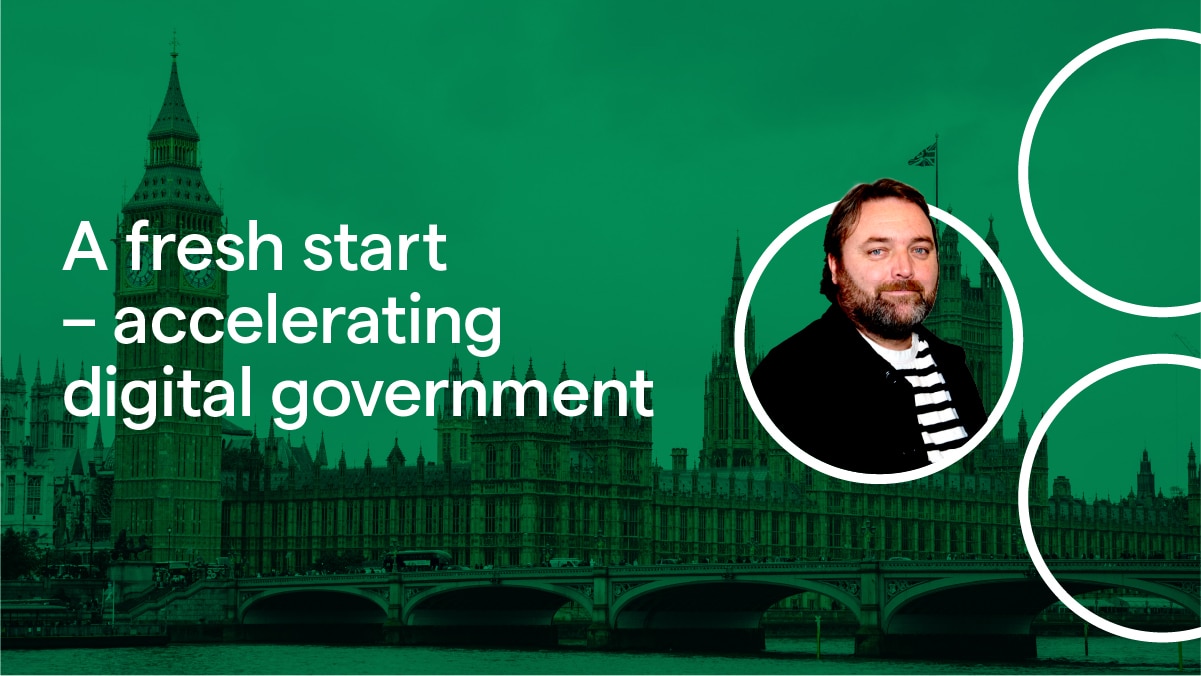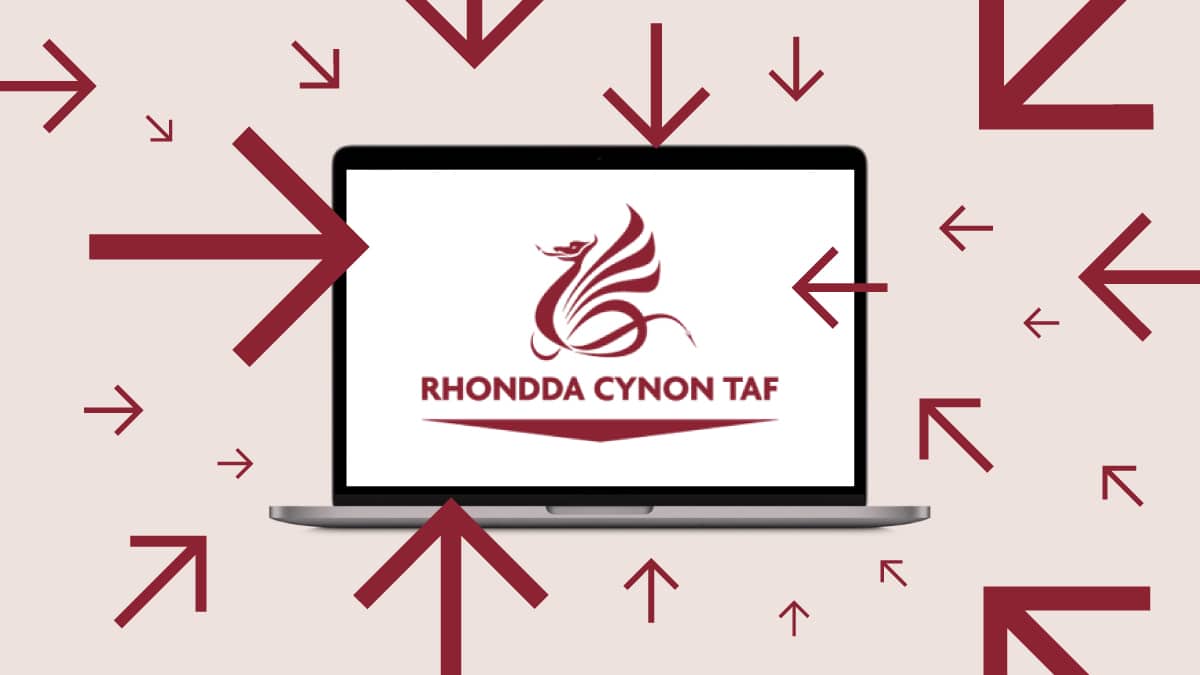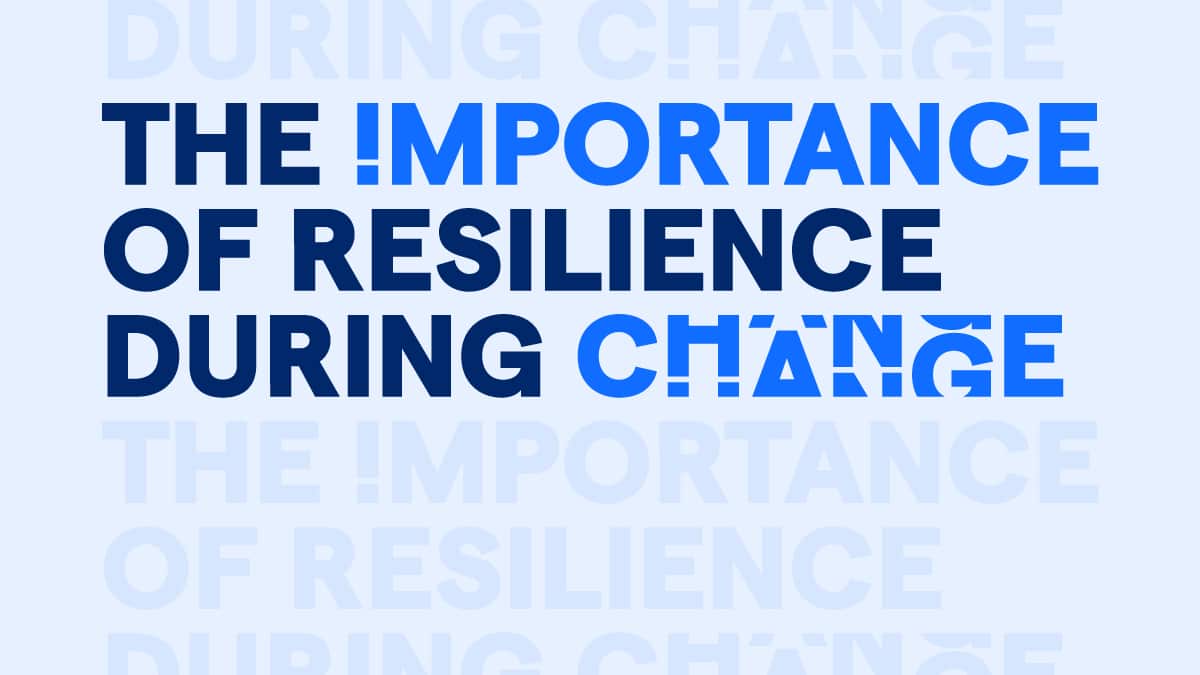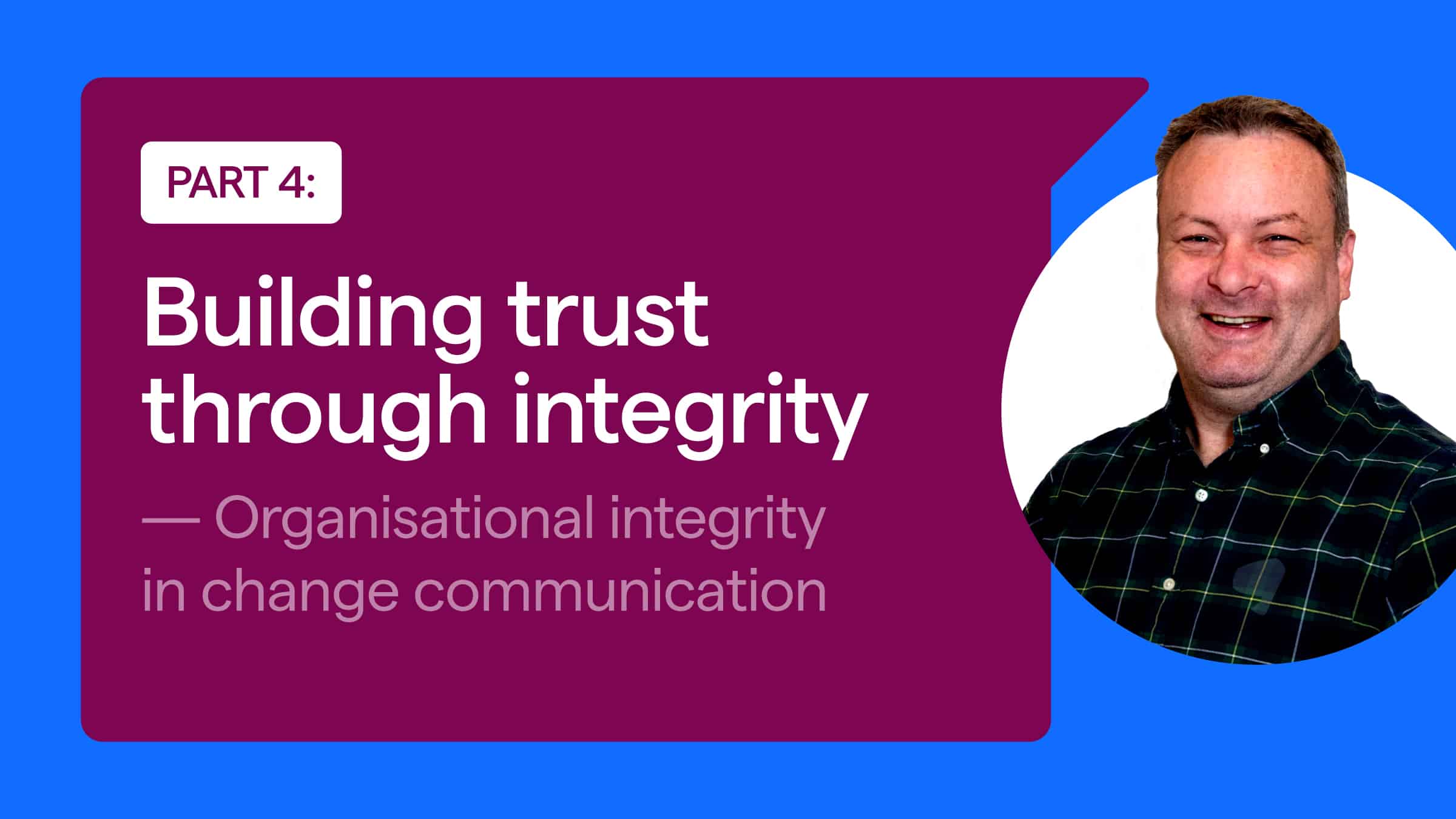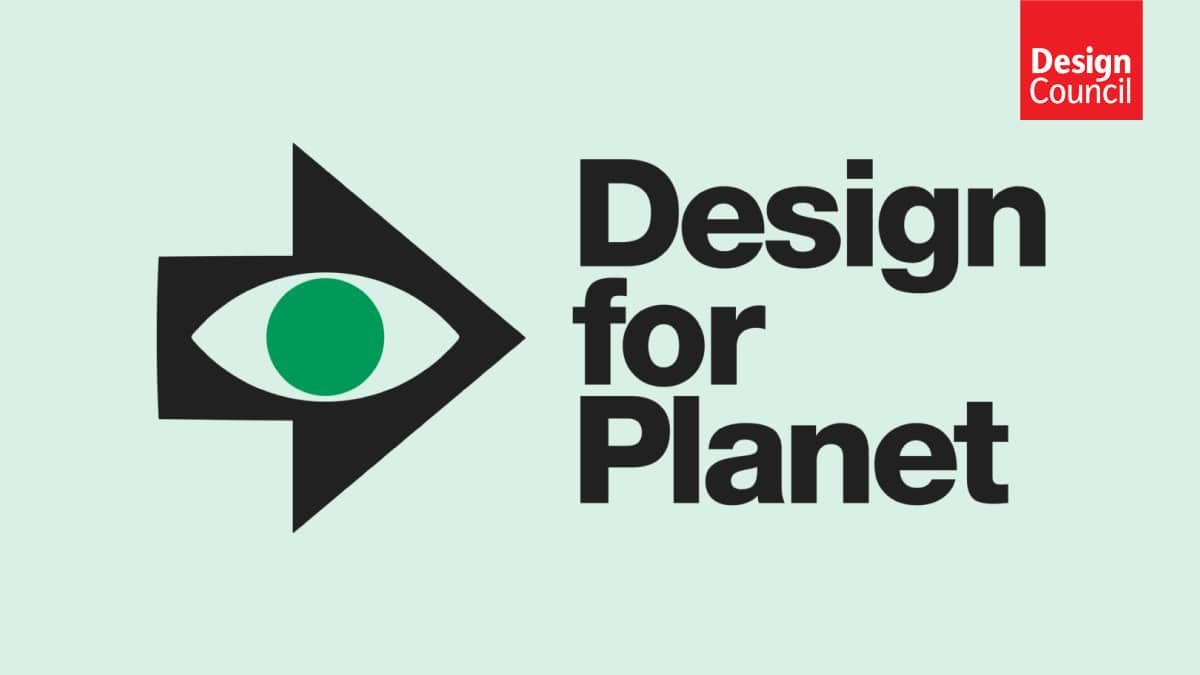Communicating Digital – Part 2
7 min read Written by: Victoria Ford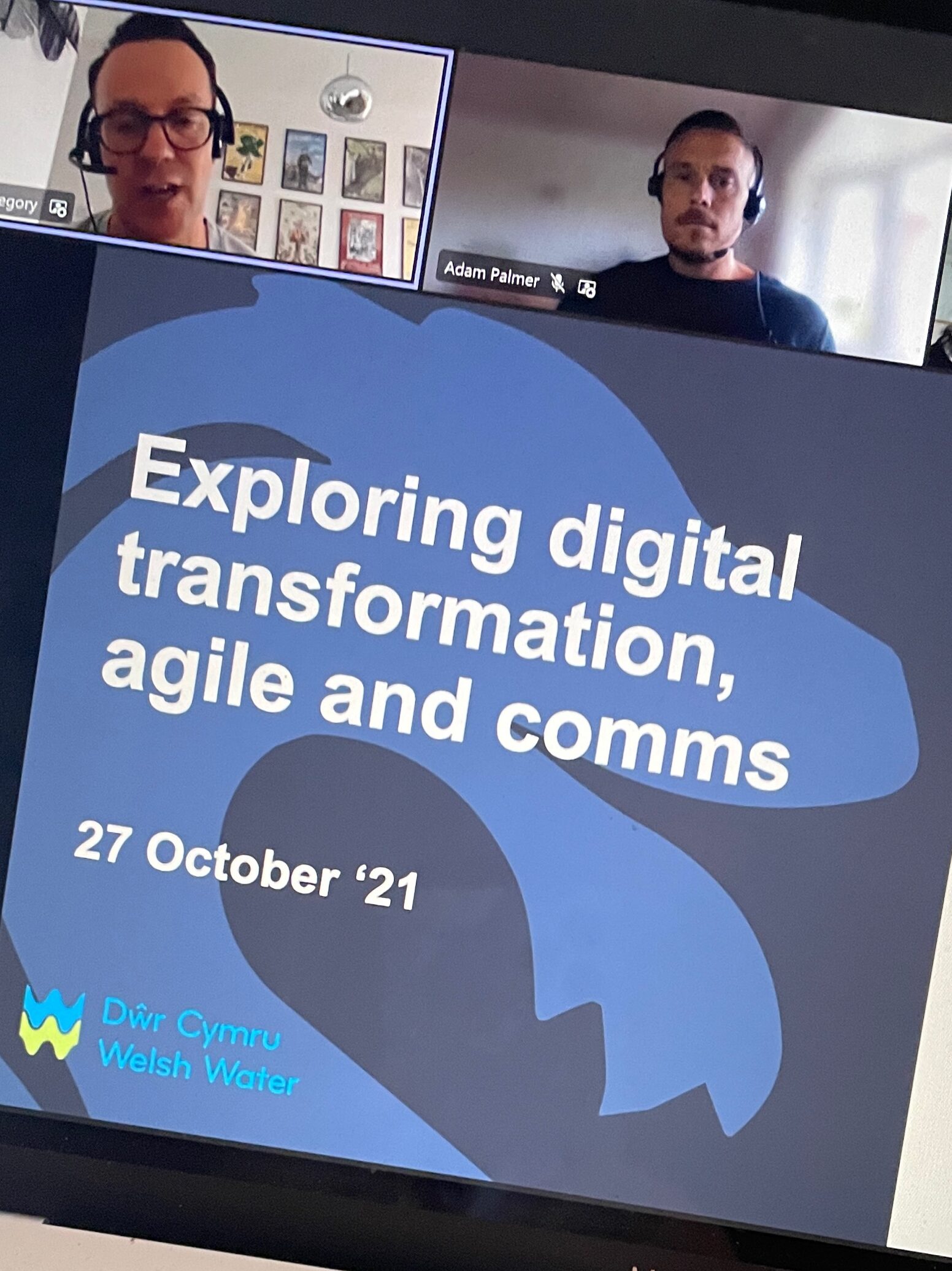
The group had invited Adam Palmer from Dwr Cymru Welsh Water, and our very own Ross Gregory, Perago. The idea was to bring in two agile delivery managers to give their experience of working with comms teams and give the group the opportunity to ask the questions that they’d always wanted to ask, in a safe environment.
Adam and Ross gave some great insight in to how communications teams could best support their roles and the role of delivery teams. They also talked about how we’re working with Dwr Cymru to support this.
In their view, communications isn’t about being quick off the mark in ‘sending stuff out’, it wasn’t about drafting emails or writing articles – it was about getting people engaged, be it employees within the business or customers who will be using the new services. It needed to be two way, providing feedback and challenge – it was about achieving outcomes.
Before joining Perago I was working with Adam as part of the Dwr Cymru Welsh Water internal comms team. Last week’s session made me reflect again on some of that work, the learning from that time and some of the approaches to communicating digital we’ve now developed at Perago.
My 4 key reflections are:
Make it about people
One of the standout moments for Adam was when we were in the early stages of developing one of the digital services. To the project team there was a lot going on. A lot of complex consideration, development, and iteration. To colleagues in the business, once we’d shared the overall vision for the project and checked it had been understood things felt a bit static but we wanted to keep the drumbeat going. In all honesty, once enough detail was removed to make it digestible, each update appeared a little bland. I’m sure we’ve all been there in projects. So, we took a different approach. Instead of reporting on progress of the project, we thought of it as an opportunity to provide insight into the people behind the project.
People love hearing about people so we developed a bi-weekly article that each focussed on a new member of the team with the idea of hearing a little bit about them, the role they did in the project, how they got involved in this type of work and a little about their lives outside of work. Woven through each article was information about the project too so was a great way of keeping the information fed into the business but wrapped up in a way that allowed people to put a face to the name as well as learning about their colleagues in a new way.
Make it tangible
Digital change is often done in the background and can be hard for some to imagine. Using real space, real mock-ups and experiences for people to see and touch is a great way of making digital, tangible.
In the session Adam and I talked about a time where a new digital room booking system was being trialled to help alleviate some of the issues with double and missed bookings. It was hard to explain what the system looked like. Mainly because it involved new iPad style displays outside each meeting room and was a new way of working for most people – so we needed to get attention early on.
We took some screengrabs of the development screens from the new product and had them professionally printed on to foamboard to create a mock up of the new devices the teams would be using. We included a short message explaining what was coming and where people could get more information.
In the office (remember those?), it made a great visual statement that something was changing and was great to see people going up to the displays to see how they would look and feel. It also worked as a way to direct people to the intranet to find out what the changes meant.
Make sure people have a voice
When talking about digital change and how we help users engage with it, it’s important for communicators to look at the bigger picture when it comes to their audiences. The Retail section of Dwr Cymru is full of brilliant people doing a great job of serving their customers. We knew we needed their input but also needed to do so in the context of their customer facing roles. As we started talking about this, we worked with the senior team to free up agents within their call rotas so they could take some time out to discuss a broader range of issues.
We called it Feedback 15. The idea was 15 agents from across the business took 15 minutes to give their feedback at 15:00hrs every Wednesday. We created a safe environment to encourage openness and honesty and summarised their feedback in a short report to the senior leadership team. This could be about parking, H&S, communications, digital tools, coffee making facilities – anything they were affected by. This was supported by a commitment to action feedback quickly to help create an environment where people would share if there were barriers to progress.
We had some great feedback that allowed us to adjust the type and frequency of communication, gave input in to how things were developed, and even how we should incentivise adoption of new digital tools and services.
Make opportunities and touchpoints
At the start of the pandemic (yes I know.. you thought you’d get to read a blog without reference to the pandemic – sorry!), the Retail Team in Dwr Cymru went all out to deliver as many services as they could to keep customers supported in challenging times. This meant that much of their work was turbo charged, accelerated and happening within a very short space of time.
At the same time, our comms team stepped up too. We used a live stream set-up and used that facility to live stream a ‘one show’ style update to show people what had been delivered. It featured short videos showing the new devices given to front line workers as well as featuring updates from the director about how it was making a difference.
This live show was watched by employees across the company, and by many front-line workers from their vans when parked up and safe to do so. Adam was a presenter on that too and encouraged people to ask questions and provide comments. This helped people realise the work they were doing was making things easier and more efficient – which in turn provided better customer experiences.
This is about thinking beyond drafting anemail orwriting a feature in an internal magazine. It’s thinking about new ways of engaging people, putting the people behind the change up front and centre and thinking of new ways of answering questions, creating a two way conversation.
Getting involved
It was great to see Adam and Ross and hear about the work that has continued to flourish at Dwr Cymru. They’re genuinely excited about what they’re doing, excited by the opportunities it brings and the role of comms in that. And it’s infectious.
We all have the opportunity to think differently about how we communicate digital change in our organisations. As comms people we need to adapt the way we work, become part of the change that’s happening and really engage our colleagues and users.
If you think we can help with your digital transformation, change comms or strategy, then drop us a line, we’d be happy to chat.
